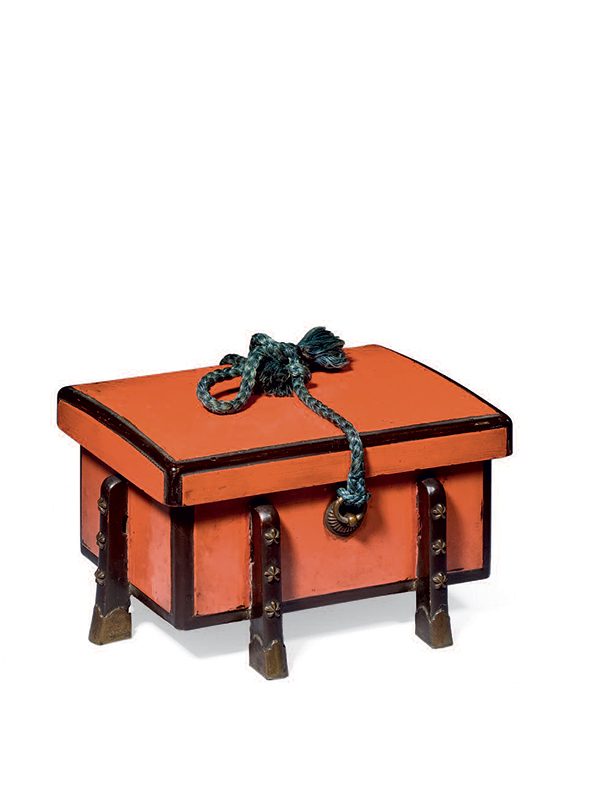Negoro lacquer miniature storage chest, karabitsu
A miniature lacquered wood storage chest, karabitsu, supported on six legs, the slightly domed cover with black-lacquered edging, repeated on the chest. The six legs each flare outwards, have metal shoes and three star-shaped fittings to the front. The long sides of the chest are fitted with metal ring handles emanating from chrysanthemum ornaments to accommodate ropes holding the lid in place. The inside and outside of the chest are covered in a layer of bright red lacquer.
The Japanese word karabitsu literally means ‘Chinese chest’, which is some what curious because although this type of chest has been used in Japan for centuries to store precious objects, no surviving Chinese chest of any period of this distinctive form is known. The six legs raise such chests from damp floors and the form is thus highly suited to the humid Japanese climate. Miniature chests appear to be quite rare, but full-sized examples survive in the collection of the Metropolitan Museum, on loan from Herbert and Florence Irving, and dated to Muromachi period, 1422[1] and in a private Japanese collection, exhibited at the Okura Museum of Art in 2009.[2] Another full-sized Negoro chest in the Kumano Hayatama Taisha Shrine in Wakayama prefecture has very similar metal mounts to the legs.[3]
- Watt, J. and Ford, B.B., East Asian Lacquer, The Florence and Herbert Irving Collection, The Metropolitan Museum of Art, New York, 1991, No. 71, pp. 1767
- Negoro, Okura Museum of Art, Toyko 2009, no. 155, p. 184
- Kawada, S., Negoro Lacquer, Shikosha, Kyoto, Japan 1985, no. 388, p. 254

